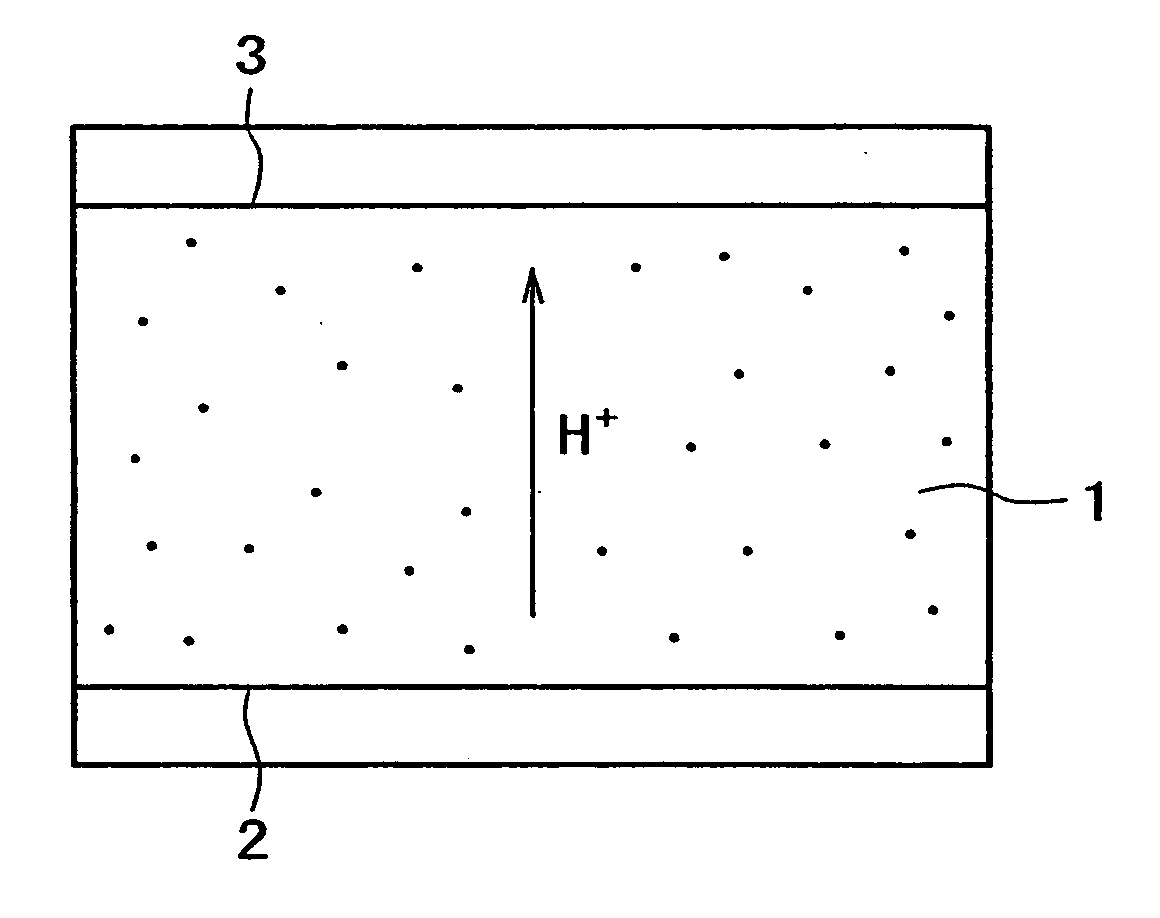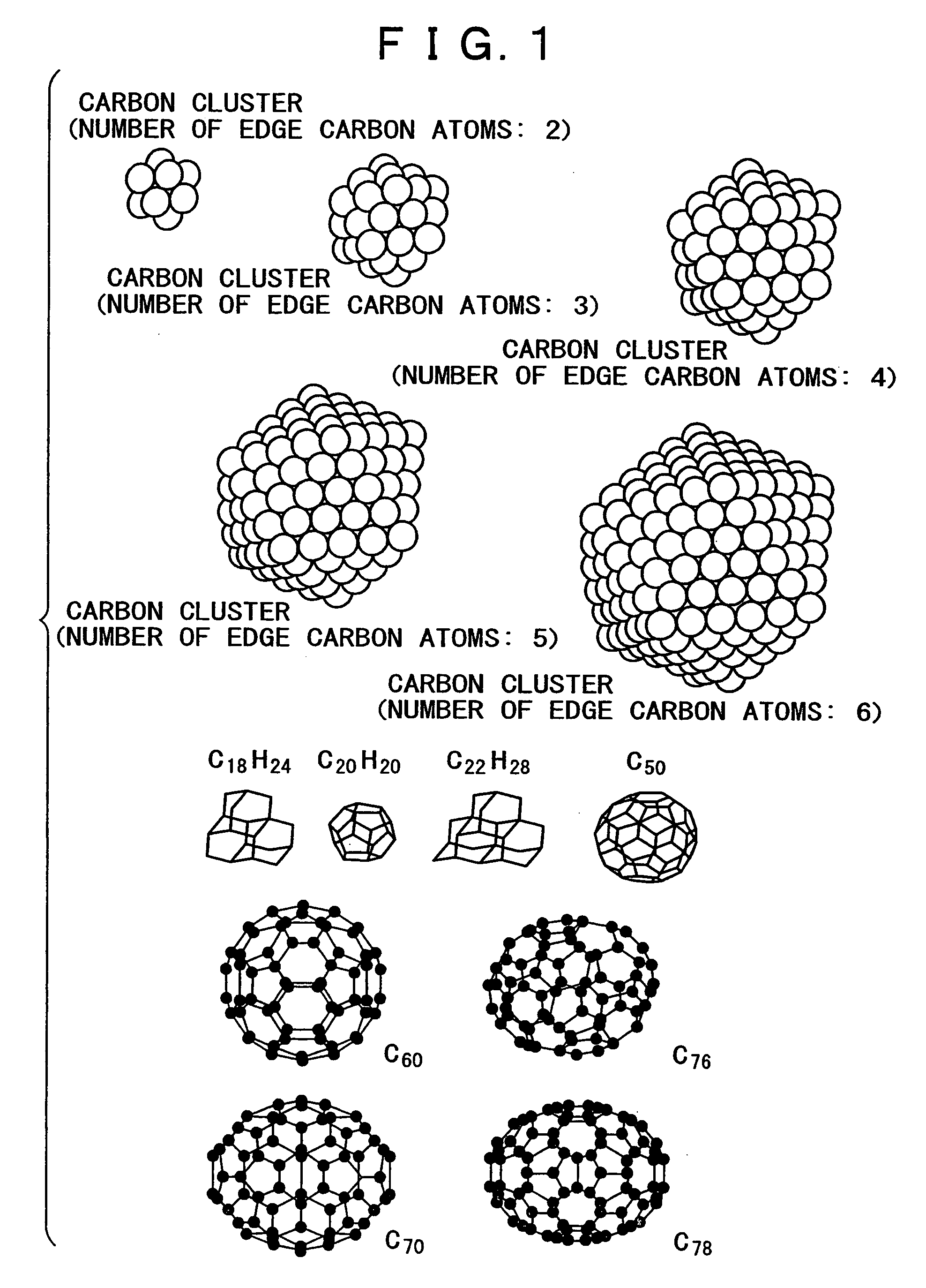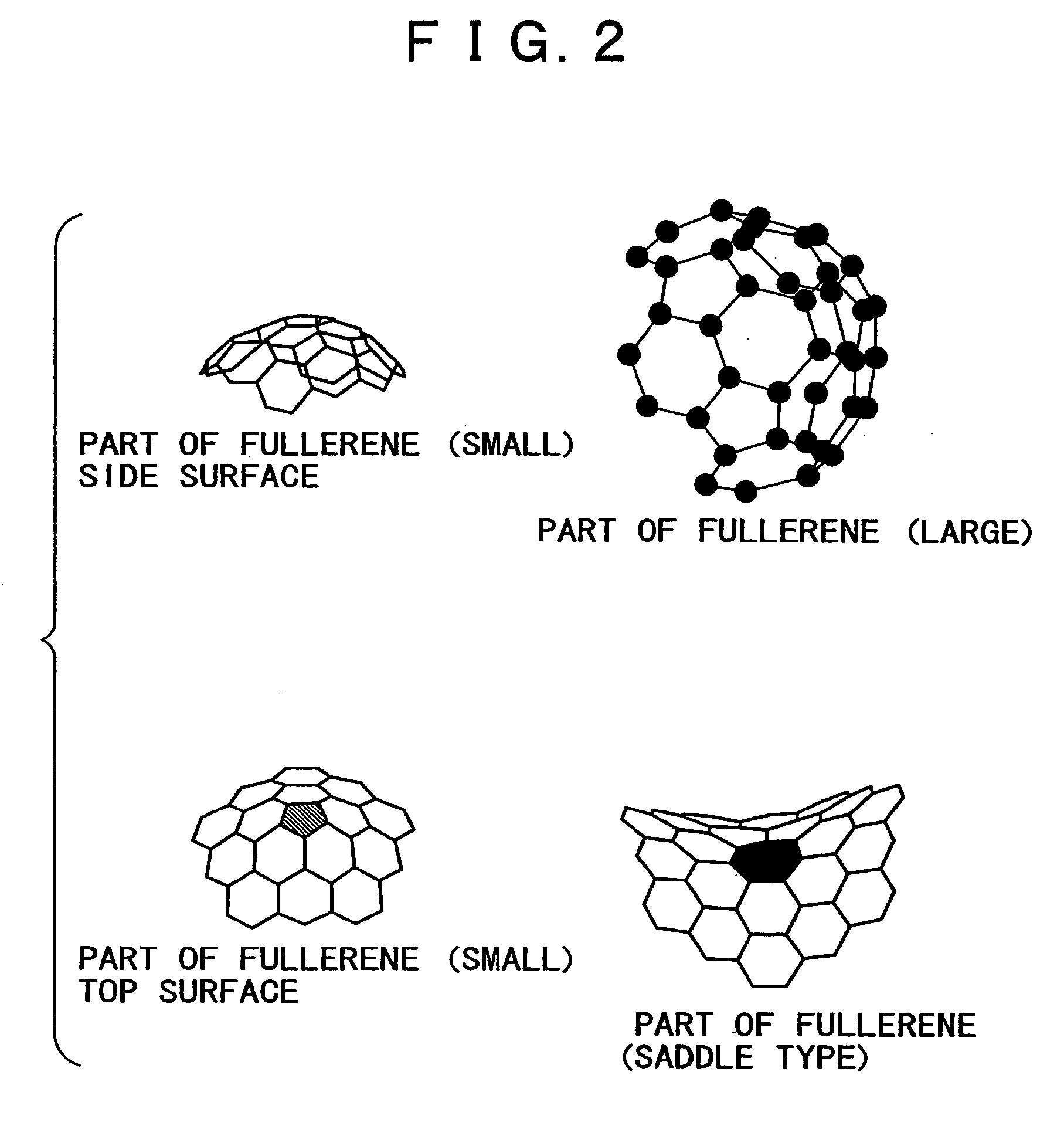Proton conductor and electrochemical device using the same
a technology of proton conductor and electrochemical device, which is applied in the direction of non-metal conductor, non-aqueous electrolyte cell, cell components, etc., can solve the problems of reducing the water content of the film, reducing the proton conductivity, so as to achieve high proton conductivity and lighten the weight
- Summary
- Abstract
- Description
- Claims
- Application Information
AI Technical Summary
Benefits of technology
Problems solved by technology
Method used
Image
Examples
example 1
[0046] Two grams of powder of C.sub.60 fullerene was put into 30 ml of fuming sulfuric acid, and the resultant mixture was stirred at 60.degree. C. in a nitrogen atmosphere for 3 days. The reaction mixture obtained was slowly poured into diethyl ether cooled on an ice-water bath; in this case, diethyl ether not subjected to a dehydration treatment was used. The precipitate obtained was separated by centrifugation, then washed with diethyl ether three times and with a 2:1 mixture of diethyl ether and acetonitrile two times, and was dried at 40.degree. C. in vacuum, to obtain a powder. The powder thus obtained was subjected to FT-IR measurement, the results being substantially coinciding with the IR spectrum of a fullerene derivative partly containing hydroxyl groups and OSO.sub.3H groups shown in reference (Chiang, L. Y.; Wang, L. Y.; Swirczewski. J. W.; Soled, S.; Cameron, S., J. Org. Chem. 1994, 59, 3960), whereby the powder was confirmed to be the objective substance. The fulleren...
example 2
[0051] A low molecular weight polyethylene oxide (PEO) having a molecular weight of about 600, a highly viscous liquid, was mixed with C.sub.60{(CH.sub.2).sub.4SO.sub.3H}.sub.6 serving as a proton supply source in such amounts that the ratio of the number of the groups --O--contained in the PEO to the number of the groups SO.sub.3H in C.sub.60{(CH.sub.2).sub.4SO.sub.3H}.sub.6 was 1:1. The resultant mixture, assuming a muddy form, was molded into a sheet shape, which was subjected to measurement of conductivity.
[0052] In this case, the sheet was held at 100.degree. C. for discharging a minute amount of moisture originally contained in the sheet, and the conductivity of the sheet at that temperature was measured, to be 1.2.times.10.sup.-3 S / cm. This is considered to be an indication of proton conduction in which the --O-- sites in the PEO, not water, serve as proton ionization hosts and protons move by using the ionization hosts as hopping sites. Besides, the conductivity is very high...
example 3
[0053] An aqueous solution of a polyvinyl alcohol (PVA) having a molecular weight of about 10000 was mixed with an aqueous solution of C.sub.60{(CH.sub.2).sub.4SO.sub.3H}.sub.6 serving as a proton supply source in such amounts that the ratio of the number of the groups --OH contained in the PVA to the number of the groups SO.sub.3H in C.sub.60{(CH.sub.2).sub.4SO.sub.3H}.sub.6 was 1:1, and a film was formed from the resultant mixture by a casting method. The film was held at 100.degree. C., and the conductivity of the film at that temperature was measured, to be 4.3.times.10.sup.-3 S / cm. This is considered to be an indication of proton conduction in which the --OH sites in the PVA, not water, serve as proton ionization hosts and protons move by using the ionization hosts as hopping sites. In addition, the conductivity is very high, for a system not using water. This is considered to arise also from the fact that the content of the PVA in terms of the above-mentioned ratio is as very ...
PUM
| Property | Measurement | Unit |
|---|---|---|
| Temperature | aaaaa | aaaaa |
| Electrical conductivity | aaaaa | aaaaa |
| Electrical conductor | aaaaa | aaaaa |
Abstract
Description
Claims
Application Information
 Login to View More
Login to View More - R&D
- Intellectual Property
- Life Sciences
- Materials
- Tech Scout
- Unparalleled Data Quality
- Higher Quality Content
- 60% Fewer Hallucinations
Browse by: Latest US Patents, China's latest patents, Technical Efficacy Thesaurus, Application Domain, Technology Topic, Popular Technical Reports.
© 2025 PatSnap. All rights reserved.Legal|Privacy policy|Modern Slavery Act Transparency Statement|Sitemap|About US| Contact US: help@patsnap.com



